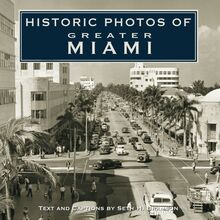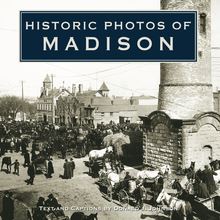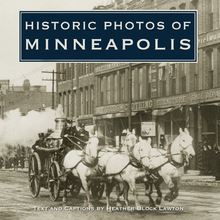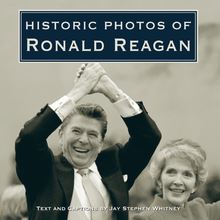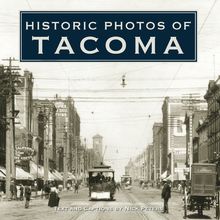The History and Stories of the Best Bars of New York , livre ebook
124
pages
English
Ebooks
2006
Vous pourrez modifier la taille du texte de cet ouvrage
Obtenez un accès à la bibliothèque pour le consulter en ligne En savoir plus
Découvre YouScribe en t'inscrivant gratuitement
Découvre YouScribe en t'inscrivant gratuitement
124
pages
English
Ebooks
2006
Vous pourrez modifier la taille du texte de cet ouvrage
Obtenez un accès à la bibliothèque pour le consulter en ligne En savoir plus
Publié par
Date de parution
01 mars 2006
Nombre de lectures
0
EAN13
9781618584557
Langue
English
Poids de l'ouvrage
25 Mo
Publié par
Date de parution
01 mars 2006
Nombre de lectures
0
EAN13
9781618584557
Langue
English
Poids de l'ouvrage
25 Mo
The History and Stories of the
Best Bars
of New York
The History and Stories of the
Best Bars
of New York
Jef Klein
Turner Publishing Company
200 4th Avenue North Suite 950
Nashville, Tennessee 37219
(615) 255-2665
www.turnerpublishing.com
The History and Stories of the Best Bars of New York
Copyright 2006 Turner Publishing Company
All rights reserved.
This book or any part thereof may not be reproduced or transmitted in any form or by any means, electronic or mechanical, including photocopying, recording, or by any information storage and retrieval system, without permission in writing from the publisher.
Library of Congress Control Number: 2005910413
ISBN: 978-1-56311-971-2
Printed in the United States of America
09 10 11 12 13 14 15-0 9 8 7 6 5 4
Contents
21 Club
Bemelmans Bar
Bridge Caf
Bull and Bear Steakhouse Bar
Cedar Tavern
Chumley s
Corner Bistro
Dublin House
Ear Inn
Fanelli Cafe
Fraunces Tavern
J.G. Melon
Keens Steakhouse
King Cole Bar
The Library
Marion s Continental Restaurant Lounge
Peter McManus Cafe
McSorley s Old Ale House
Milano s Bar
Molly s Pub and Restaurant, Shebeen
The Oak Room
Old Town Bar Restaurant
Onieal s Grand Street Bar
P G Cafe
Paris Cafe
Parkside Lounge
Pete s Tavern
P.J. Clarke s
Spring Lounge
White Horse Tavern
Index
Acknowledgments
I love bars for the same reason you do. They are fun to go to, they are even fun to work in. And I say that despite the many brunches I toiled away, slinging quiche under the relentless bleat of Kenny G. on the Muzak. New York City is home to the best bars in the world-the best classy bars, the best neighborhood bars, the best dive bars. New York City wrote the book on bars. I just got to help.
As part of my research, I interviewed people at more than 50 bars. Unfortunately, there wasn t room in the book for them all. But I d like to say thanks to all the bar owners, managers, bartenders, and regulars I interviewed. They told me some great stories and provided me with archival materials, links to sources, and when I was really lucky, some unforgettable evenings.
There are special thanks due to those of you who made this project even more pleasurable: Jamo McManus (Peter McManus Caf ), Barbara McGurn (Oak Room), Audrey Saunders (Bemelmans Bar), Joe Diliberto (Cedar Tavern), Gina Ruiz (Chumley s), Bruce Snyder and Diana Biederman ( 21 Club), John Ronaghan and Peter O Connell (Paris Cafe), Richard McGorty (local historian, Molly s Pub and Shebeen), and Denis Lynch (Milano s).
I d also like to thank Bill Wander, McSorley s historian and author, and Dale DeGroff, the undisputed King of Cocktails, for sharing their experiences and insights with me.
Of course I have to thank my mom, Eileen Pimentel. Not only because of all the great stories she told me of New York as it was in the forties, but because she instilled in me her love for history and research. To my sisters, Gini, Lizzie, Viki, and Jodi, and cousins Cameron and Jackie, thanks for your interest in the book. To my friends who babysat and listened to every story about every bar I visited (and sometimes went along): Peggy Halmi, Rosemary Gohd, Joy Orlan, Cristine Grapa, Laurie Bagley, and Kirk Anderson, thanks again. To my mother-in-law, the late Vera Klein, there is much appreciation, for her help looking after my children, as well as for being a wonderful hostess who taught me so much about hospitality. Thanks are also due to Ron Klein.
But most of all I thank my children, Ellis and Simone. You guys are the bubbles in my champagne.
-Jef Klein, Author
Preface
Part of my job as a publisher is looking for books that need to be created. This is one of those books. I can recount some of the most memorable moments in my life-both good and bad-that happened in some of the settings described in this book. It occurred to me that generations of people have had similar connections to these places, although their experiences and their stories have been more dramatic and historic than my own. With thanks to good friends Taylor and Rawls, we decided that we should investigate, discover and share a collection of these significant stories in a book that describes the remarkable settings where they took place.
This book is not about the liquor or the drinks, although they play a part. It is about the places where life s events have unfolded. It is about the friendships and fights, the business deals and the new ideas, the great conversations and the solitary thinking, that all occurred in these institutions.
When we sat down and tried to determine which establishments to include in The History and Stories of the Best Bars of New York, we faced an enormous challenge. Ask any person and they will have an opinion about which ones are the best. How does one define the best ? For our part we looked for that indefinable factor that you know when you see it. It is a mixture of longevity, quality and significance. It is the feeling you get when you walk in and know that a lot of things have happened here, important things. While the list can be argued, we welcome the discussion.
We invite people to use this book. To find their place in historical context, to feel a sense of connectedness to the people who share this city and to the people who came before them. For those new to the city or to those who rarely venture outside their neighborhoods, here is an opportunity to explore and to find places they have not yet discovered that offer the comfort and familiarity of their favorite community gathering spaces.
With these thoughts in mind we offer The History and Stories of the Best Bars of New York .
-Todd Bottorff, Publisher
The History and Stories of the
Best Bars
of New York
21 Club
21 West 52nd Street
One might think a beginning as a speakeasy would be an inauspicious one. After all, speakeasies were never known for their service, nor for their liquor.
Your average speakeasy was a dark hideaway where men of dubious integrity served liquor of dubious quality. Down an alley, into a basement, a peephole slides back, and you d whisper something to gain admittance. Once inside, an ersatz bar made from wood planks and sawhorses. A few tables, a few light bulbs. The place would be packed, though, with every specimen of humankind. The liquor was often served in coffee cups, from one of four pitchers; one each for scotch, bourbon, rye, and gin. Often, it was the same brew in each pitcher, but with coloring added to create the effect of different types of liquor. The liquor could be made well, with a real still, such as the artist Neysa McMein had in her apartment. But too often it was stewed up from bottles found lying around the house or worse. Poisonings were not uncommon during Prohibition. Usually there was a drain in the floor for the liquor, and almost always, a back door for a speedy getaway. Such is the quick and dirty portrait of the typical speakeasy, circa New York, 1925.
But this was New York, after all, and though it had plenty of homegrown speakeasies in every little neighborhood, it had been home to the best bars in the world. And so, during Prohibition, New York was home to the best speakeasy in the world. And that speakeasy was the 21 Club.
The 21 was no ordinary speakeasy. The best liquor and finest wines, the best cuisine, the rarest cigars, and the finest service were offered at this cozy club located in the basement of an elegant townhome just off Fifth Avenue. Best of all, the proprietors kept out the proletariat, making 21 an oasis of fine dining and scintillating conversation in a sea of bathtub gin.
Just gaining admittance to 21 was much more difficult than getting into the average speakeasy. At 21, the clientele were the city s notables-business tycoons, artists, performers, publishers, politicians, and the most interesting personalities from New York and the world. Simply showing up and looking good was not enough to gain admittance. Having money to spend was not enough. This was an exclusive club, always, but exclusive in the best sense of the word: class didn t matter, but having class did. Founded by Jack Kriendler and his cousin, Charlie Berns, the 21 Club started out upscale and hasn t budged a note since.
Even in a city filled with rags-to-riches stories, 21 stands out as a riches-to-riches story. Not that the Kriendlers were rich. The family had modest beginnings on the Lower East Side. Their mother Sadie, a widow, was left to raise eight children. Working as a midwife, and with some help from her brother, Sam Brenner, she got by. Her four sons, Mac, Jack, Pete, and Bob, were determined to get ahead. They enrolled in good colleges and worked nights in their Uncle Sam s bar in the Jewish ghetto on Rivington Street. Uncle Sam cut an elegant figure on the Lower East Side in those days, with his handmade suits, faultless manners, and diamond ring.
Even in a city filled with rags-to-riches stories, 21 stands out as a riches-to-riches story .
When Prohibition hit in 1919, speakeasies blossomed seemingly overnight. The most innocuous little basement tea parlor suddenly became a den of illegality. It quickly became evident that there was money to be made in Prohibition if one got in on the ground floor, so to speak. Jack Kriendler, studying at Fordham University, and with the intrepidity only a college student can have, decided to open his own place. He talked Charlie Berns, studying business at New York University, into going in with him. They scraped together the money, and what they couldn t scrape, they borrowed from their Uncle Sam, who hocked his diamond ring for the boys. Jack and Charlie figured they d make enough money to pay for college and get out of the business. That was more than 75 years ago.
They started off running a cup joint called the Red Head in Greenwich Village. A cup joint was a place that served liquor in tea or coffee cups, with refills coming from fla






